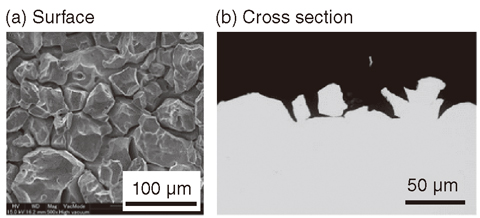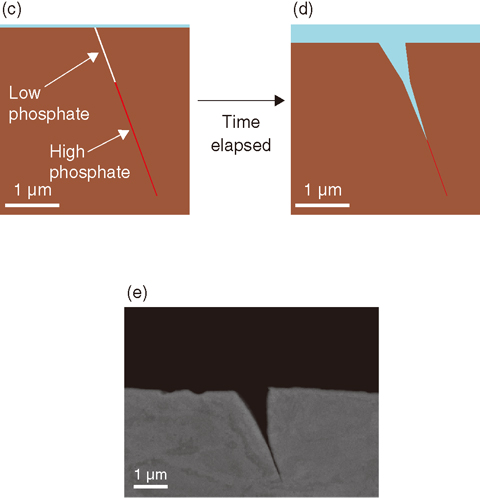
Fig.4-6 Intergranular corrosion of stainless steel in a nitric acid solution

Fig.4-7 Schematic of an intergranular corrosion model using the cellular automata method

Fig.4-8 Intergranular corrosion behavior considering the concentration of phosphide
Nuclear fuel reprocessing plants contain high-temperature condensed nitric acid (HNO3) solution for dissolution of spent nuclear fuel, and austenitic stainless steels are used as a main material for spent nuclear reprocessing systems. In such a highly oxidizing environment, stainless steel shows the morphology of an intergranular (IG) corrosion surface, as shown in Fig.4-6. It is known that grain dropping occurs with IG corrosion development, accelerating the corrosion rate. To maintain the safety of the system, it is important to understand the IG corrosion behavior. Although one of the causes of IG corrosion is the existence of impurities in steel, such as carbon and phosphorus, it is not clear that there is a cause-and-effect relation between impurity and IG corrosion behavior.
In this study, we developed a new IG corrosion simulation model using a cellular automata method to clarify the influence of impurity in stainless steels on IG corrosion behavior. A cellular automaton is a discrete model wherein a system is divided into lattice cells and those cells are set to some states and wherein time evolution is implemented according to some fixed rule defined in each specified cell. Using the developed model, we can simulate not only simple but also complicated IG corrosion shapes by applying grain, grain boundary (GB), and solution states into grids of cells, as shown in Fig.4-7. In the study, we conducted IG corrosion simulation of stainless steel with several concentrations of impurity around the GBs, and the results of the simulation had similar shapes to those of IG corrosion tests of extra-high-purity stainless steel with small amounts of phosphorus impurities, as shown in Fig.4-8. These results indicate that the existence of impurities in stainless steels affects the complicated IG corrosion shapes of stainless steels in HNO3 solution, and concentrated phosphate around the GBs accelerates the IG corrosion rate.
We can conduct several kinds of IG corrosion simulations, such as grain-dropping, using the developed model. This model promises to shed light upon the mechanisms behind various corrosion phenomena by simulating those corrosion shapes and weight losses.